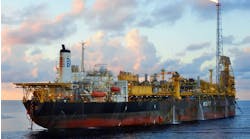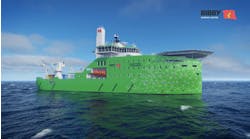Offshore staff
CARLSBAD, Calif. and LYNGBY, Denmark — Viasat Inc., a communications company, and Cobham Satcom, a provider of satellite communications to the maritime and land segments, are collaborating on a new, advanced satellite connectivity solution for the maritime and energy industries in preparation for the launch of Viasat’s next-generation satellite constellation, ViaSat-3.
The connectivity system, which will include a portfolio of antenna systems from Cobham Satcom, is being designed to deliver high-speed connectivity that will leverage the immense satellite capacity expected from the ViaSat-3 constellation. Each of the three ViaSat-3 satellites is anticipated to deliver at least 1 terabit of data per second (1Tbps)—equal to 1,000 gigabits per second, which will provide flexibility to offer even faster internet speeds and manage increasingly data-hungry applications, the companies said. In addition, the collaboration will include the introduction of the upgrade kit, which will allow conversion of existing Ku and other Ka band services to Viasat services.
The companies said they have deployed fast, reliable satellite broadband internet on hundreds of vessels with Viasat’s existing Ka-band network and Cobham Satcom’s advanced Ka-band SAILOR user terminal. They also said the current solution has quickly gained momentum as demand for reliable connectivity onboard vessels soars, especially from productivity application, video conferencing and entertainment.
Shameem Hashmi, Viasat's vice president and general manager, Maritime, said, “The terminal solution will be important as the ViaSat-3 constellation, once complete, is expected to incredibly increase Viasat’s total satellite fleet capacity by 600%. Plus, layered upon this immense capacity will be the ability to flexibly move the capacity, directing it to high demand areas, such as the Caribbean, the Mediterranean or Straits of Singapore and Malacca where demand for maritime connectivity is often concentrated.”
11.10.2022



